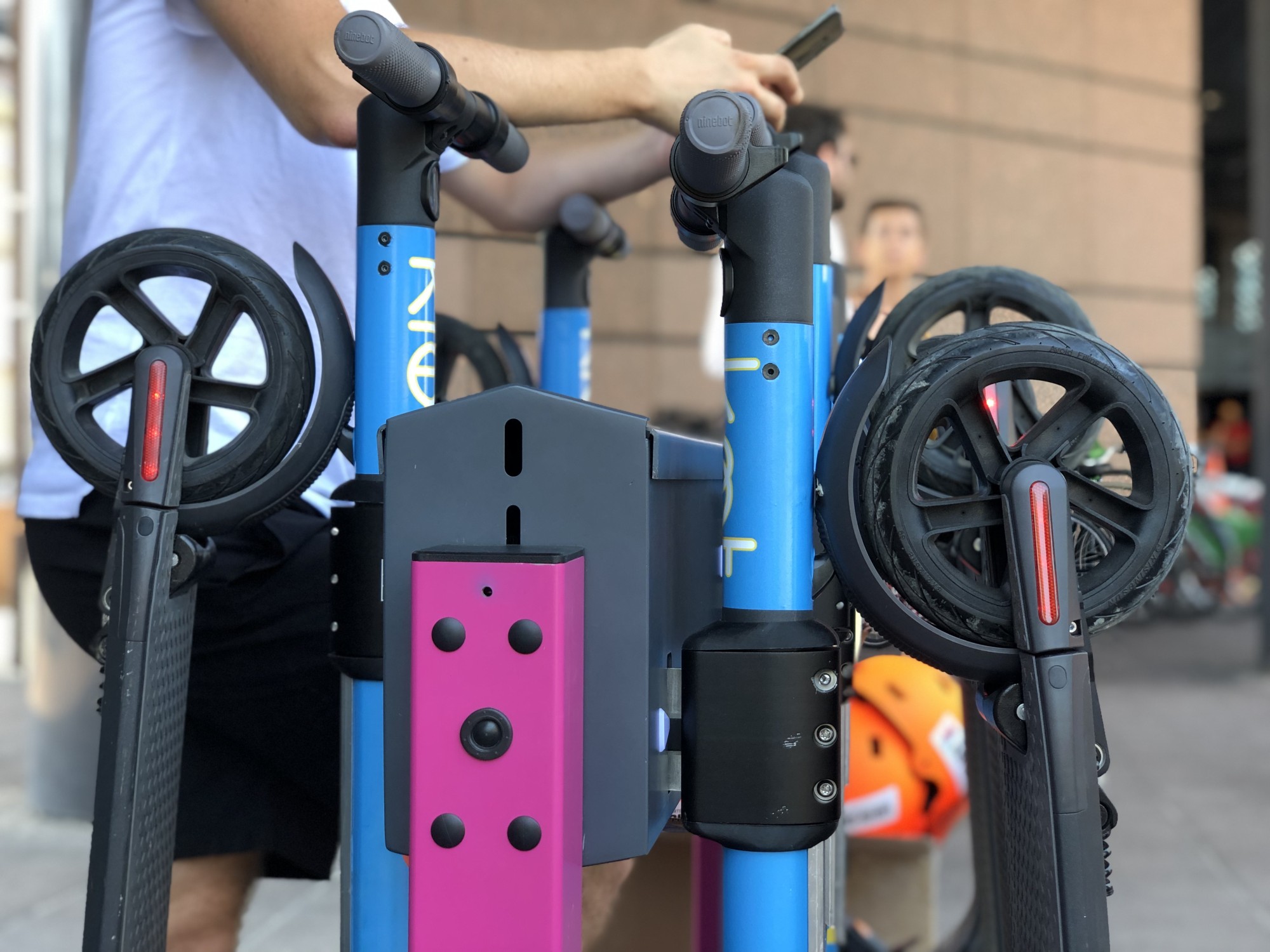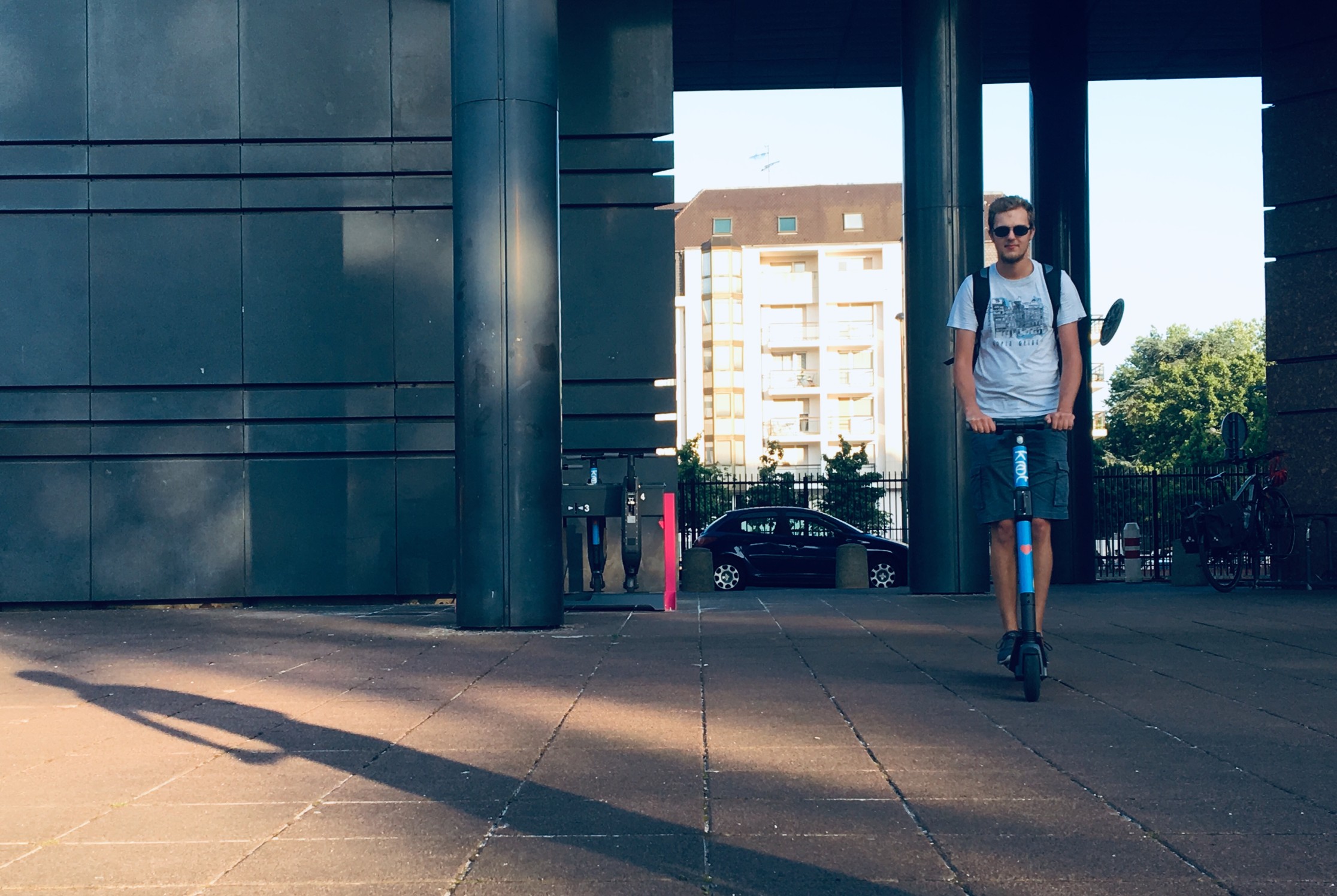Published on September 16, 2019 by Polina Mikhaylova

There is no doubt: e-kick scooters have proven their viability as a response to the last mile problem all around the world. Compact, easy to ride, available everywhere, comfortable (let’s for now leave security concerns aside) - scooters are perfect for short-distance spontaneous trips in urban areas.
But here comes the bummer - when it comes to the operational side, free floating scooter systems can’t handle operations today whiteout enormous equity investment. Vehicles are vulnerable to the vandalism, block sidewalks and requires huge operational costs for charging and readjustment. The average life span of a scooter remains insufficient to cover investment costs despite the high user price - from 10 to 17 € an hour.
And this is the moment where docking stations are coming back into the game. Main advantages offered by station based solutions:
- Reducing operational costs related to charging. Electric scooter (bike, skateboard… pick one you like the most) has to be charged and preferably every day. Till now, humanity came up with 5 solutions: (1) ‘jockeys’ swap batteries on site, (2) personnel that move vehicles to charging warehouses, (3) through ‘juicers’ network - independent workers that collect vehicles to charge on their own facilities, (4) swappable battery stations, (5) docking / charging stations. Docking stations is the only method offering the possibility to charge vehicles with the minimal operator’ involvement- users do the job stationing vehicles back to docks. Swappable battery stations requires higher user involvement by tacking out the battery, but also rises the issue of securing these installation carrying lithium batteries inside.
- Control your energy sources. Docking stations are directly connected to the grid, which gives the opportunity to manage the energy source in a centralized way. No more diesel generators to charge bunch of scooters under a bridge (true story), no more burnt apartments, no more diesel cargo cars collecting scooters at night.
- Stop the sidewalk anarchy. Many of big cities today have been transformed into a wild west scooter playground. They are literally everywhere (and few years ago it was all about free float bikes). Cities are trying to regulate it by setting up parking zones, operators define parking zones on the app, but it remains hard to control. Docking, on the other side, gives no other opportunity to end user than to park the vehicles where it belongs.The ride ends only when the vehicle is secured on the station - problem solved.
- Limit the vandalism impact.Scooters are light and portable, which is a great thing for the multi-modal commute, but it’s also too easy to carry and to destroy them, while they are waiting for the next customer in the middle of the street. Providing secure stations to lock them can deal with this. KNOT has deployed its stations in Saint-Denis, near Paris (not the safest area, trust me) and for last 18 month only 8% of fleet was destroyed by voluntary vandalism acts.
- Retain your customers. Having docks near strategic points, such as railway stations and other transportation hubs, near big recreational facilities and job sites, can actually handle most of the commute needs in the city and also give users some kind of guarantee to actually find the vehicle when they need it.

Of course, it’s not all black and white :
- The installation of stations requires an infrastructure investment, connection to grid electricity supply, civil engineering costs - means there is a need to rethink the whole business model around shared scooters.
- Negotiation with the land owner- you need to find at least 1 m2 to set up the station, as well as energy supply.
- Limiting trip possibilities for the end user.User won’t have the possibility to drop the scooter wherever he wants to, so it limits the ’last mile’ feature. Although, it’s all about the density of installation. Using the ‘Velib rule’ and installing stations not futher than 300 meters from another one makes most of the users happy. But then again, we are back to much higher infrastructure costs.

If you have any questions about the docking system functioning, just kick me a mail on hello@knot.city. And by then, have a safe ride and enjoy micro mobility boom!